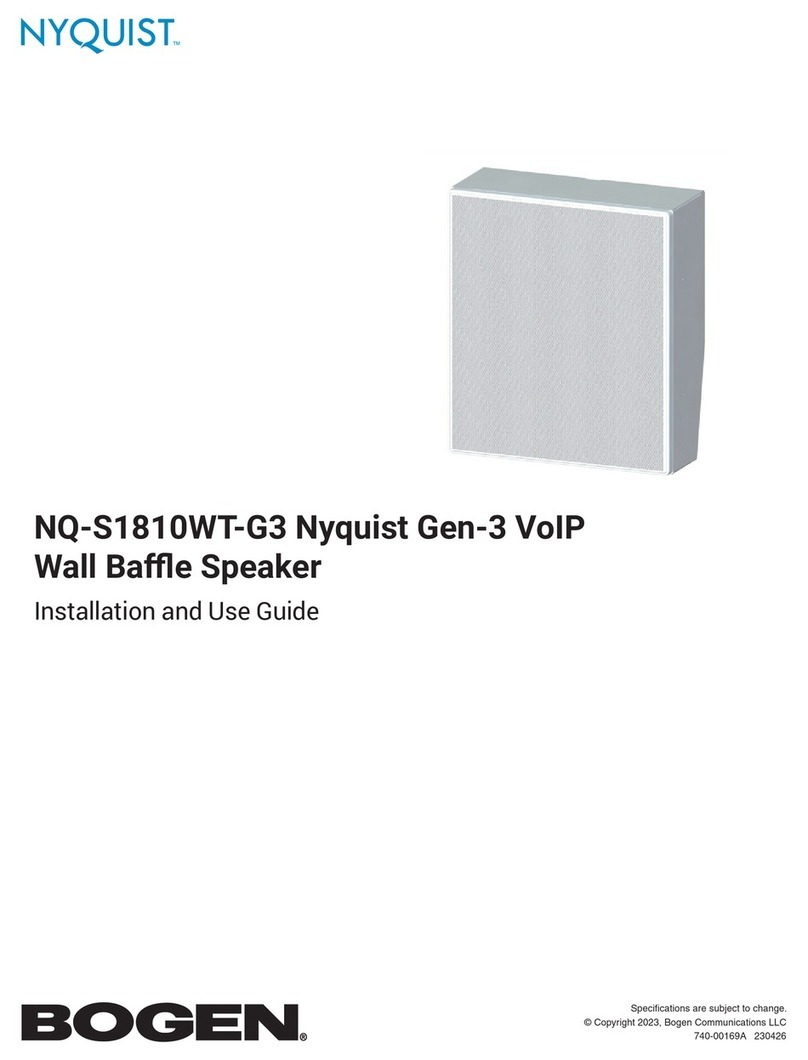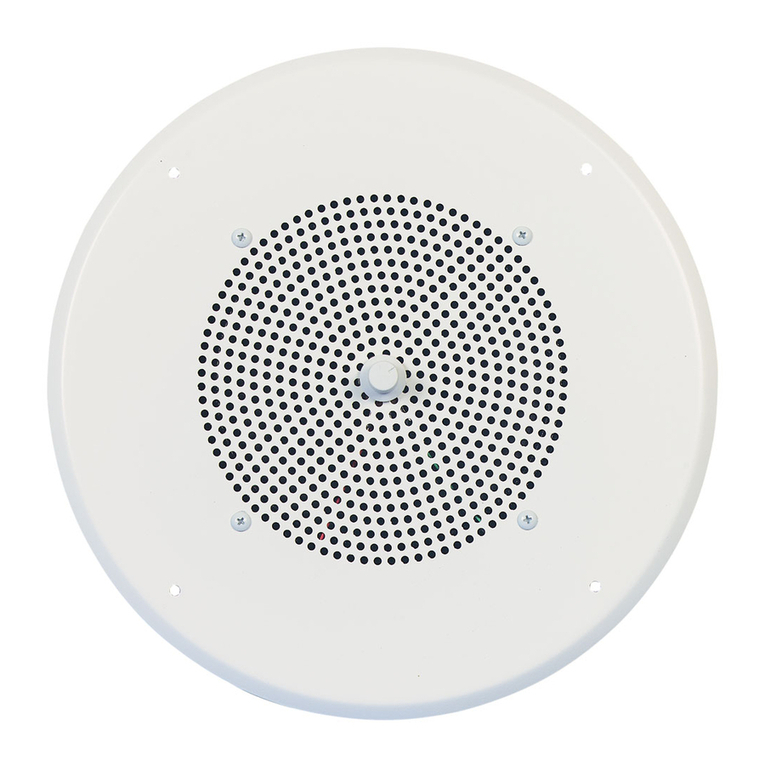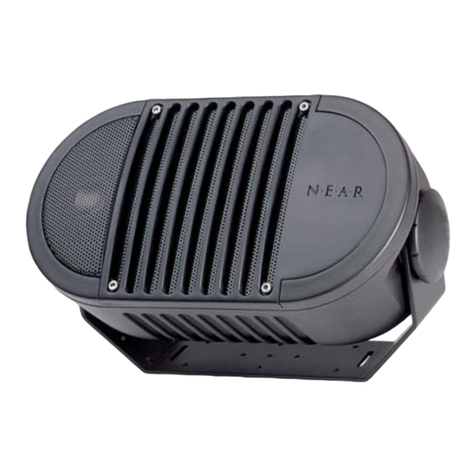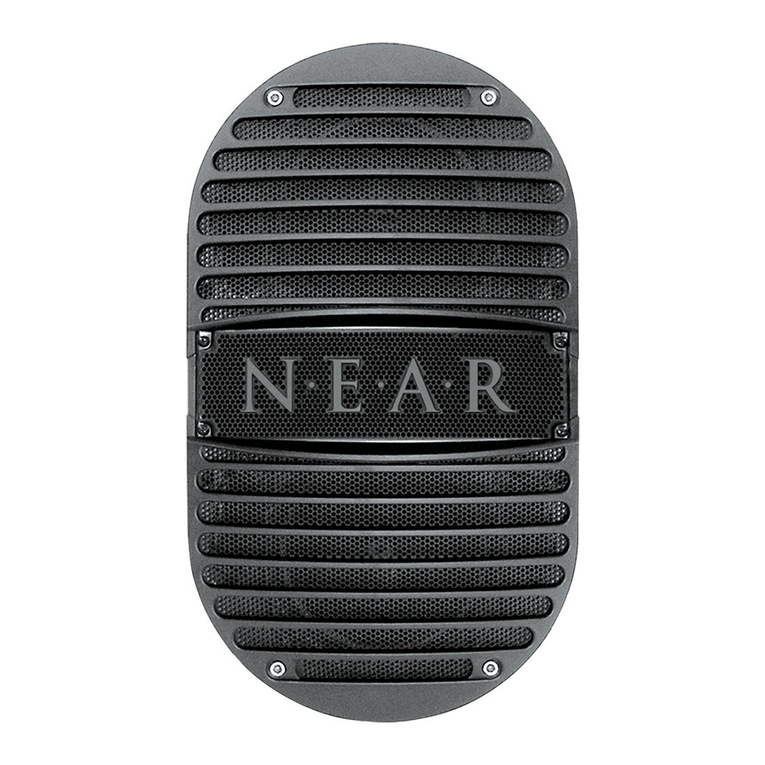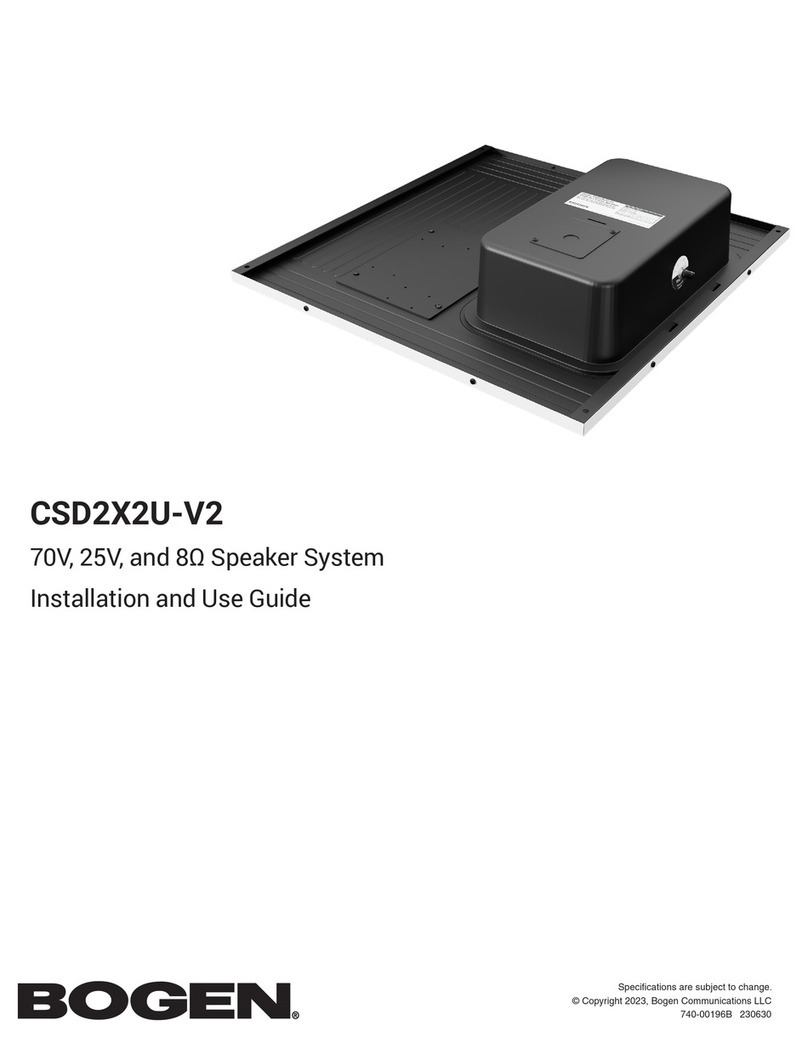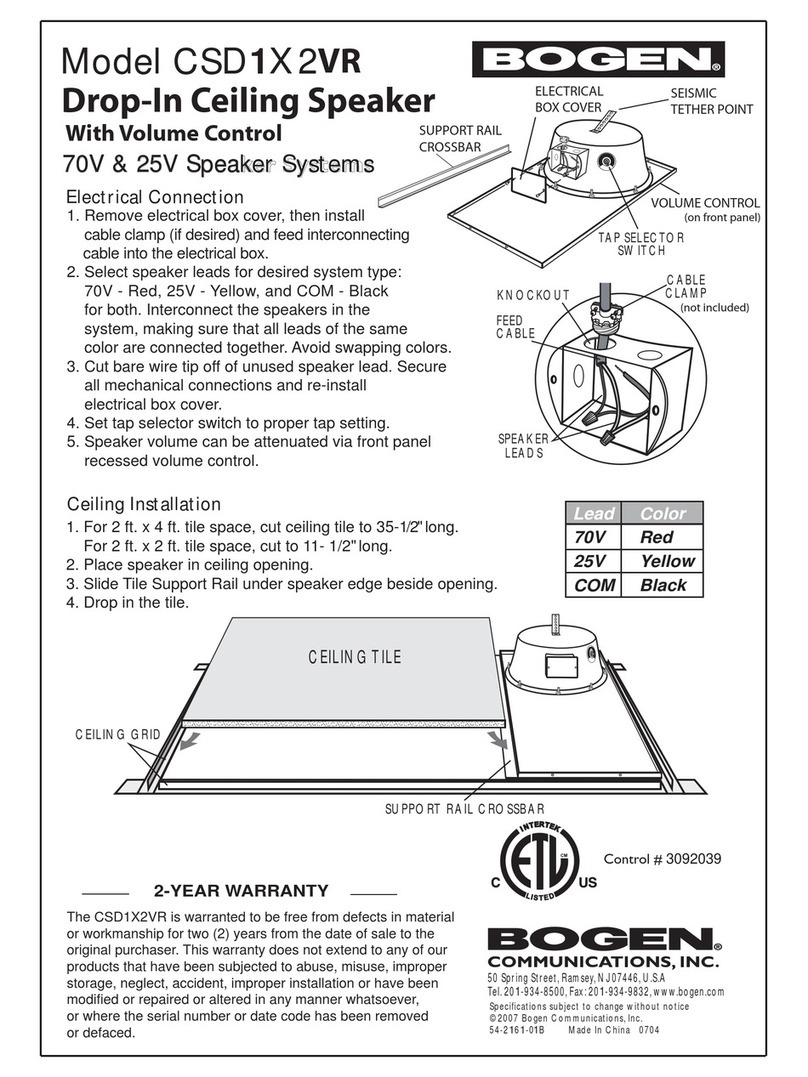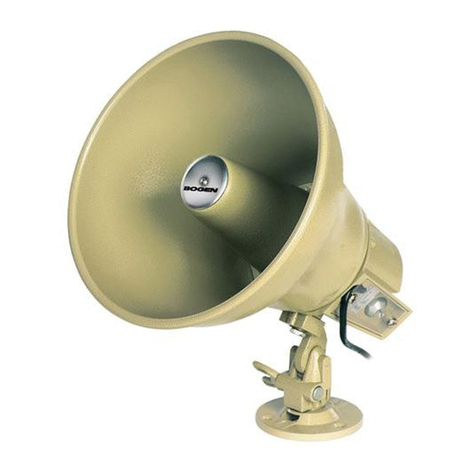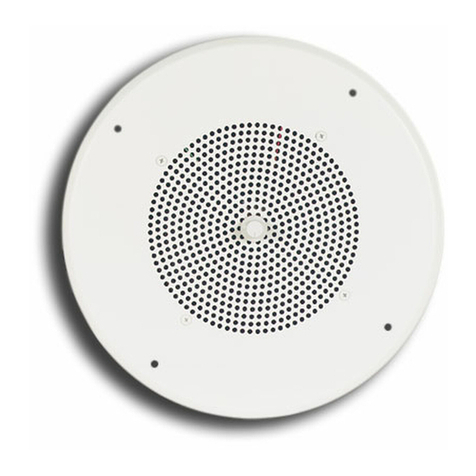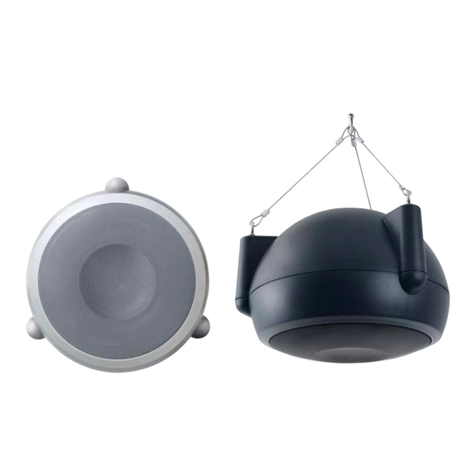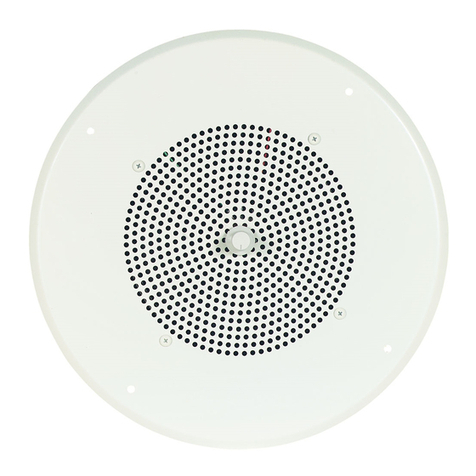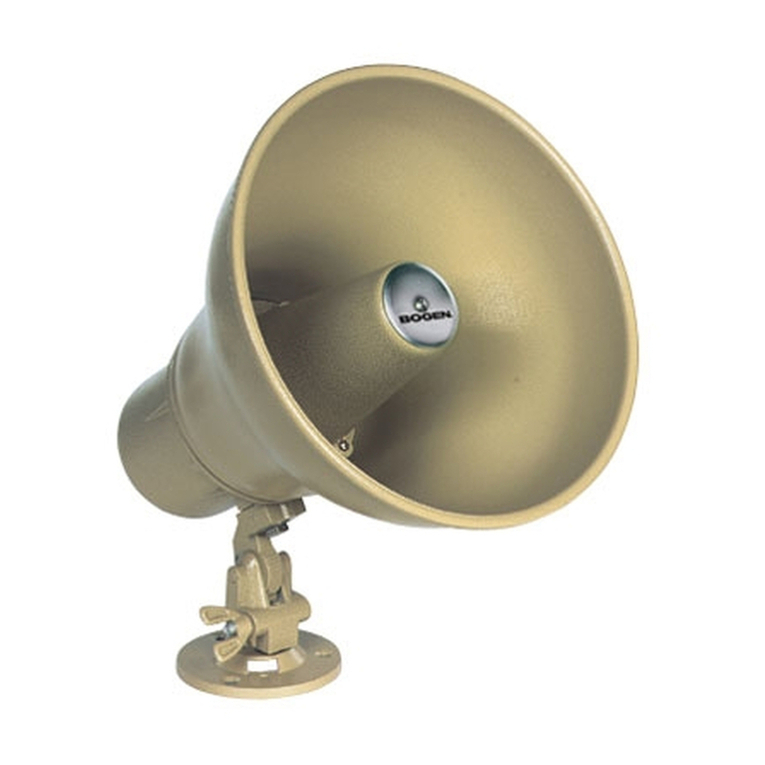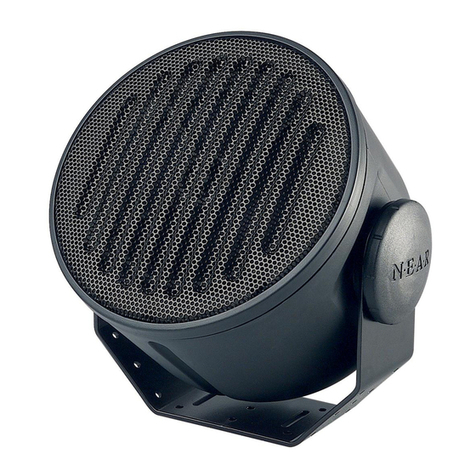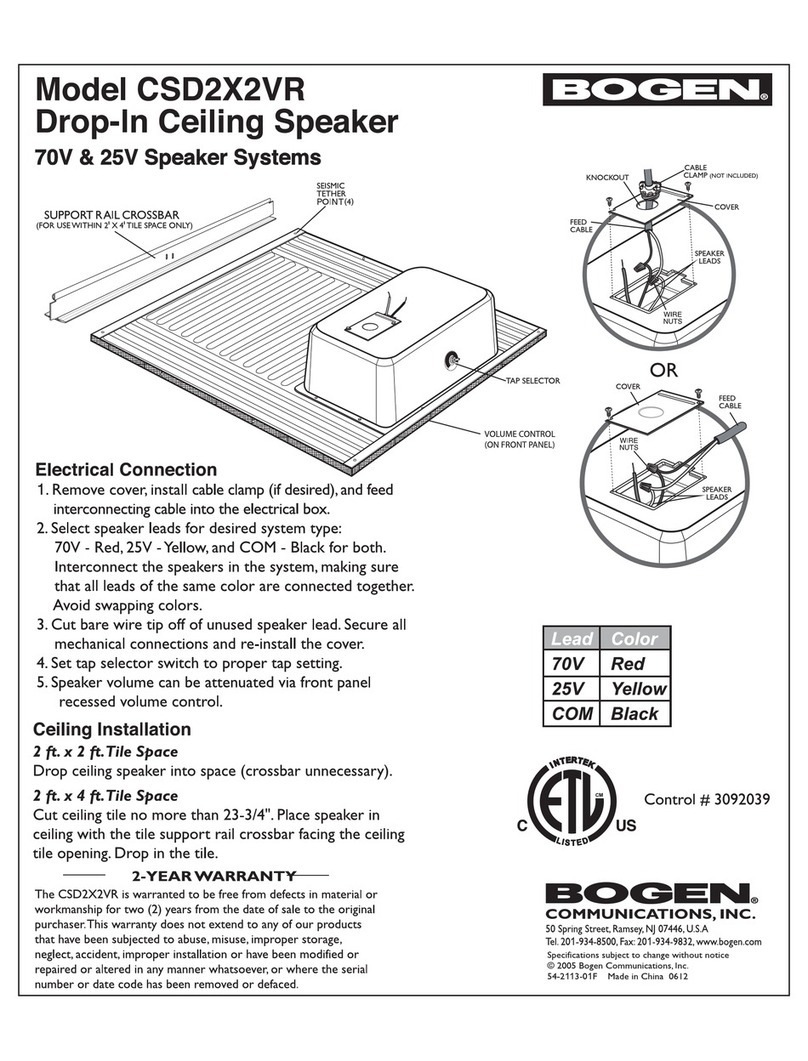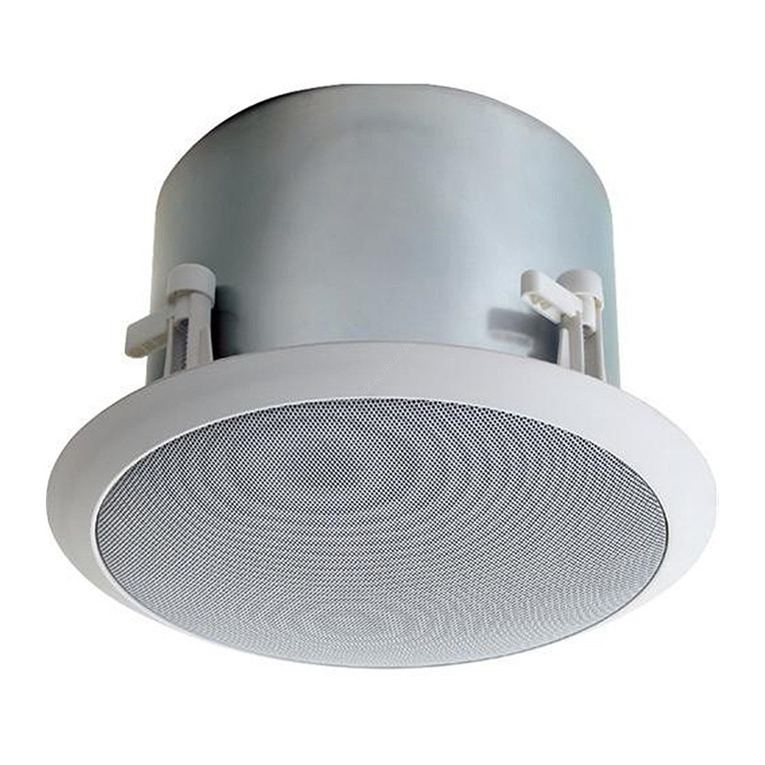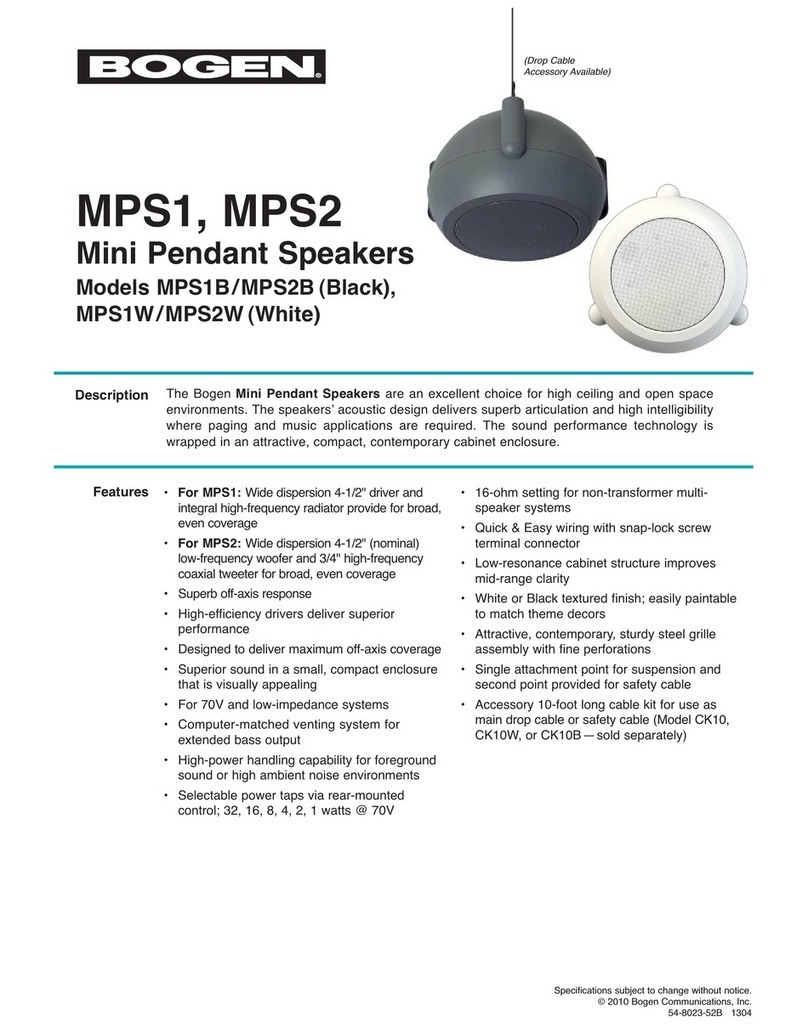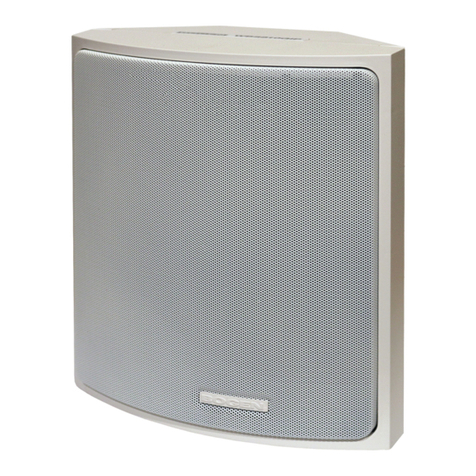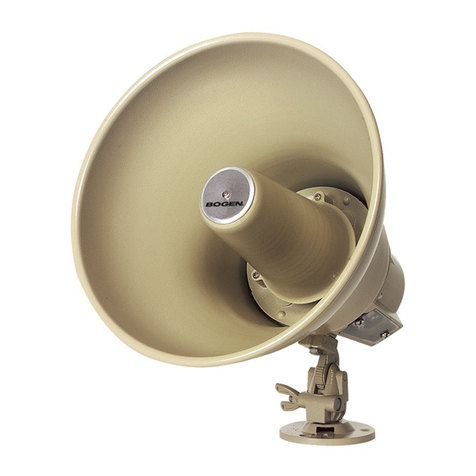www.bogen.com
17
EASY DESIGNTM
•Determine the ambient noise
level and type of environment
in which the speakers will be
installed.
•Then select the speaker(s)
best suited for the area.
Example:
•The ambient noise level in a
machine shop in an industrial
area is 90 dB. By referring to
the chart, you will find that the
HS30EZ horn loudspeaker is
best suited for this environ-
ment.
What is Easy Design?
Armed with just 3 pieces of information, you can quickly create a
bill of material for speaker paging jobs. Bogen’s Easy Design line
of products was created specifically to make the design process
easier and less time consuming for the installer.
You supply some basic pieces of information – type of application,
dimensions of the area to be covered, ambient noise level, and
ceiling height*. Then, a few simple and direct charts will imme-
diately provide you with the best type of speaker to use, the number
of speakers needed, and the amplifier power required for the job.
Each speaker in the Easy Design line is designed with a single
power tap and a volume control. Any paging system you create
using the Easy Design products will be flexible, robust, and powerful.
If noise levels increase in the future, just turn up the volume con-
trols on the speakers – the amplifier will not overload!
You get all the benefits of a 70V central-amplified system – full
power capability, high-quality sound and performance,
2-wire installation, long speaker runs, flexibility in amplifier
location, no distributed power supplies – and now, super simple
system design (we’ve eliminated the multiple power taps). Easy
Design speakers have the high quality and reliability you expect
from Bogen.
1
1
2
Select the correct type
of speaker for the job
(see chart below)
Find the number of
speakers needed
(see charts on pages 18-20)
3
Select the amplifier
for the system
(see page 21)
Select
Speaker
Type
* Not all dimensions needed for all speaker types. Refer to section 2 for specific dimensions needed for each speaker.
see chart on pages 4 & 6 see chart on page 19 see chart on page 19
SM1EZ
CS1EZ
WB1EZ HS7EZ
HS15EZ HS30EZ
*For applications over 100 dB, contact Bogen for assistance.
EASY DESIGNTM GUIDE
see chart on pages 18 & 20
For applications with mixed
noise levels, such as a location
with quiet waiting rooms,
medium noise level office
areas, and very noisy manu-
facturing, select an appropri-
ate speaker type for each
different area.
Once you have selected the
speaker type(s), the next step
is to determine how many
speakers you will need to
cover the area sufficiently.
